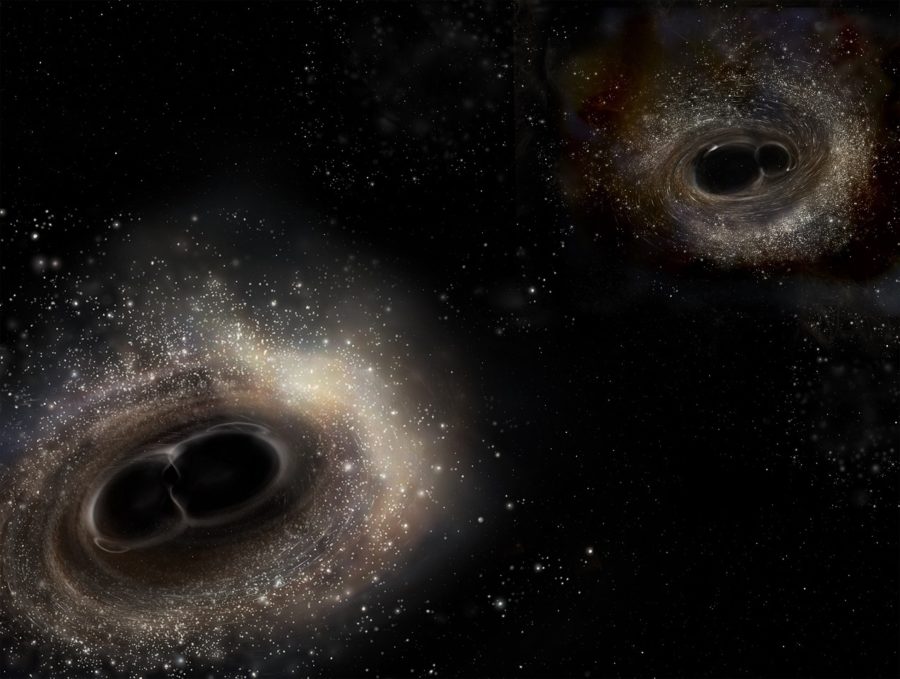Unsolved Mysteries: What is Dark Matter?
June 14, 2019
It has long been acknowleged that the universe holds many secrets. Despite the great progress made over the centuries in scientific knowledge, many mysteries remained unsolved. Are there other intellegent life forms out there? What is it like inside a black hole? Is space infinite? One mystery that has commanded the attention of scientists for almost a century concerns the most basic question: What is the universe made up of?
For over a hundred years, it was generally accepted that the universe is made up of protons, neutrons, and electrons, also known as “baryonic matter.” These microscopic particles make up atoms, the smallest unit of matter. Baryonic matter is visible to the eye, though sometimes the assistance of telescopes or microscopes is necessary. It makes up all stars, planets, and galaxies. It also accounts for less than five percent of the universe’s total mass.
To explain this phenominon, scientists theorize that approximately 95 percent of the universe is made up of dark energy, an inexplicable force that accelerates the expansion of the universe, and dark matter, which can only be observed in its interaction with space matter through its gravity. Although little is known about it, dark matter accounts for the missing mass in the universe.
The exsistance of dark matter was first theorized in 1933, after physicists observed that the rotational speeds of galaxies didn’t fit the expected results from standard physics models and equations showed that there wasn’t enough observable matter in galaxies to keep them from disintegrating.
The quest to solve this anolomy picked up in the 1920s, when more advanced technology such as gamma radiation-detecting space telescopes allowed astrophysists to confirm the earlier calculations and observations. Additionally, powerful radio telescopes made gravitational lensing (where matter causes light to bend between its source and the observer) possible and strongly suggested that there was a kind of matter out there could be detected, but not seen.
“Everything you can see, everything you feel, everything you’re made up of, only makes up 5 percent of the universe, and the rest is this dark stuff…and we have no idea what it is,” says Rebecca Leane, a theoretical physicist at MIT.
More is known about what dark matter isn’t than what it is. The best scientists can figure is that dark matter is a form of matter made up of an entirely different class or classes of subatomic particle. As can be expected, it is pretty difficult to learn more about something that can’t actually be observed. Despite this, research on dark matter has proven to be essential. Although the exact identity of dark matter is yet to be known, the search for dark matter, has already produced real technological gains. Many of the detection tools used in the field are highly applicable to other areas like medical imaging or nuclear security. So while we still don’t know much about dark matter today, it could very well change the way we live tomorrow.












